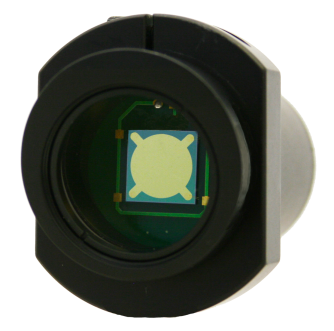
Electro-optics technology concerns the interaction between electromagnetic and electrical states of materials. Courtesy of Gooch and Housego.
What is Electro-Optics?
In the last 20 years or so, the field of electro-optics has become increasingly important. It is often challenging to predict the future of scientific discoveries and their relevant applications. However, with the development of new optical sources such as ultrafast and fiber lasers, electro-optics has grown significantly in science, industry, and domestic uses. New fields that study the interaction of electromagnetic waves with the electronic properties of materials continue to emerge and evolve.
Electro-optics technology involves the practical application of light, optics and electronics. Furthermore, it is a branch of electrical engineering and material physics that involves components, devices, and systems operating through the propagation and interaction of light with various materials. Overwhelmingly, it concerns the interaction between electromagnetic (optical) and electrical (electronic) states of materials.
Many electro-optic technologies rely on the “Electro-Optic effect” to operate. Simply speaking, the electro-optic effect describes the change in optical properties of a material when it is placed in a DC or low-frequency electric field. Subjecting a material to an electric field allows for the modification of a medium’s refractive index. Electro-optics technology exploits this effect by sending an electrical signal through a medium, thus shifting the refractive index and changing the properties of an incoming light beam. Today, the field of electro-optics encompasses technologies that operate from the millimeter wavelength region to the X-ray region.
Applications
The applications for electro-optic systems is growing at a phenomenal rate. Some of the main devices utilizing this effect are electro-optic modulators (EOMs), switches, and sensors. These technologies find a countless applications in a variety of different fields and disciplines.
Electro-optic Modulators
An electro-optic modulator is a signal-controlled device that can be used for commanding the power, phase or polarization of a laser beam. It usually contains one or two Pockels cells, which is a device consisting of an electro-optic crystal through which a light beam propagates. The phase of light leaving the crystal is then controlled by changing the incident electric field as the phase is directly proportional to the time it takes for light to pass through the crystal.
EOMs are frequently used in laser applications, such as modulating the power of a laser beam, laser frequency stabilization schemes, Q-switching of solid-state lasers and switching pulses in pulse pickers. This allows for applications in diverse fields like medicine, telecommunications, defense, research, and many more. For example, the Moerner lab at Stanford utilizes EOMs in research involving two photon scanning microscopy and high power pulsed lasers. By using laser spectroscopy and microscopy, the lab is able to analyze single molecules to probe various biological processes.

EOMs are signal-controlled devices used to command the power, phase or polarization of a laser beam. Courtesy of Boston Micromachines Corporation.
Another relatively recent application of EOMs is in astronomy. One of the main issues in space research is atmospheric turbulence, which makes stars appear to flicker when viewed through a telescope. However, lasers for Laser Guide Star (LGS) adaptive optics are designed to create an artificial reference star to correct atmospheric distortion. The EOM is an important component in this design as it allows researchers to pick a portion of the laser light and shift the frequency. This results in a reference star about twice as bright than without the use of an EOM.
Electro-optic Sensors and Switches
Electro-optic sensors and switches are electronic detectors that convert light, or a change in light, into an electronic signal. In other words, it measures a physical quantity, then translates it into a form that is readable by an instrument. Industrial and customer applications, for example, are lamps that turn on automatically in response to darkness or position sensors that activate when an object interrupts a light beam. As another example, sensors and switches find use in the energy field where optical sensors are used to monitor structures that generate, distribute, and convert electrical power.
There are many types of electro-optic sensors and switches. However, the most common types are photoconductive devices, photovoltaics, photodiodes, and phototransistors. Photoconductive devices convert a change of incident light into a change of resistance. Photovoltaics, otherwise known as solar cells, convert incident light into an output voltage. On the other hand, photodiodes and phototransistors convert incident light into an output current. Optical switches are generally used in optical fibers, where electro-optics technology is used to switch one circuit to another.

Electro-optics technology allows for advancements in technology, such as this optical switch with the ability to operate at cryogenic temperatures. Courtesy of Phys Org.
An interesting example of this technology is a newly developed optical switch at Sandia National Laboratories. It is the first switch to transmit up to 10 gigabits of data per second at temperatures just a few degrees above absolute zero. Making an electrical connection to systems at very cold temperatures often poses great challenges, however, electro-optics offers a solution. The switch allows data transmission in cold environments by utilizing light travel through an optical fiber rather than using electricity. This technology could potentially enable data transmission for next-generation superconducting computers to store and process data at cryogenic temperatures.
Conclusion
Overall, electro-optics technology is a highly versatile area that allows for creative solutions to complex problems. With major applications in EOMs and electro-optical switches and sensors, this technology is highly sophisticated and widespread in use. From space research to microscopic biological processes, electro-optics proves to be an extremely dynamic area of study. In combination with other advanced technologies, electro-optics has enabled a great variety of devices with higher intelligence and performance.
